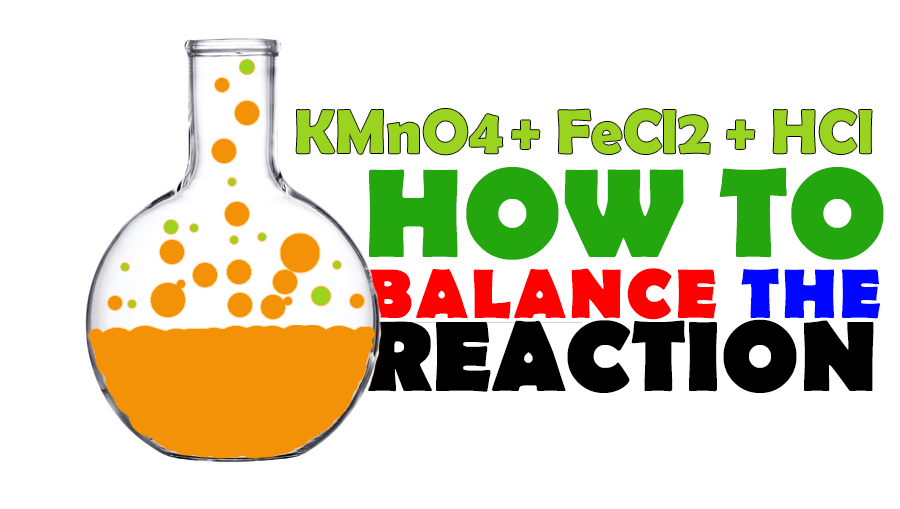KMnO4, HCl, and FeCl2 are the reactants of the above reaction. But we have to know that the HCl in this reaction is creating the acidic environment for the reaction. If we consider the oxidation number of each of the reactants of the above reaction, we can notice that there are some electrons exchanging among the ions of the reactants. Let’s understand it first.
Exchange of electron among KMnO4, HCl, and FeCl2
The reaction is-
KMnO4 + HCl + FeCl2 = KCl + MnCl2 + H2O + FeCl3
If we focus on the oxidation number of Mn (Manganese) and Fe (Iron),
KMn(7+)O4 + HCl + Fe(2+)Cl2 = KCl + Mn(2+)Cl2 + H2O + Fe(3+)Cl3
Here, Mn release 5 electrons, on the other hand, Fe accepts only one electron. That means what? can you answer it? Yes, you are right. The reaction is an electron exchanging reaction, e.i. it is a redox (Oxidation-Reduction reaction). This type of reaction can be balanced very easily by the ion-electron method. Now we learn how to use the ion-electron method to balance the reaction.
Reactants of the reaction
The names of the reactant chemicals for the redox reaction which is concerning in this post are even bellow-
- KMnO4 = Potassium permanganate which is Oxidizing agent (as ion MnO4 -1)
- FeCl2= Iron(II) chloride which is Reducing agent (as ion Fe2+)
- HCl = Hydrochloric acid (creates an acidic environment)
Potassium permanganate reacts in Hydrochloric acid with iron(II) chloride
The skeleton reaction of Potassium permanganate and Iron(II) chloride in Hydrochloric acid (KMnO4 + HCl + FeCl2) is–
KMnO4 + HCl + FeCl2 = KCl + MnCl2 + H2O + FeCl3
Oxidation Half Reaction
Here, Fe(2+) donates one electron, therefore the oxidation number of the iron becomes +3. The electron donation by a chemical species is called the oxidation reaction. So the oxidation half-reaction for the above reaction must be as follow-
⇒ Fe2+ – e– = Fe3+ … … … (1)
Reduction Half Reaction
Mn(7+) accepts five electrons from the reducing agent and becomes Mn(2+) in the reaction. Since the oxidation takes place at the same time as the reduction reaction in any redox reaction. Therefore the same electron which iron is releasing, Mn accepts. Therefore, the reduction half-reaction is-
⇒ MnO4 -1 + 5e– + 8H+ = 4H2O + Mn2- … …. …. …. (3)
Now, the Oxidizing agent released 5 electrons, on the other hand, the reducing agent accepts only one electron at a time. Therefore, the reducing agent FeCl2 Iron(II) chloride needed five times than the oxidizing agent KMnO4 (Potassium permanganate). That’s means equation (1)x5.
After that, we add both half-reactions (Oxidation Half Reaction equation 1 and Reduction Half Reaction equation 2) to make the full oxidation-reduction reaction (Redox) reaction.
MnO4 -1 +5e– + 8H+ = Mn2- + 4H2O
5Fe2+ – 5e– = 5Fe3+
MnO4 -1 + 8H+ + 5Fe2+ = Mn2- + 5Fe3+ + 4H2O
Do you remember that we excluded the K+ and Cl– ions for our calculation benefit? At this point, we must add the ions to fulfill the balanced redox reaction.
Adding necessary ions and radicals
KMnO4 + 8HCl + 5FeCl2 = KCl + MnCl2 + 5FeCl3 + 4H2O
Follow us on Twitter, Facebook, Linkedin and Tumbler
Read More


Leave a Reply